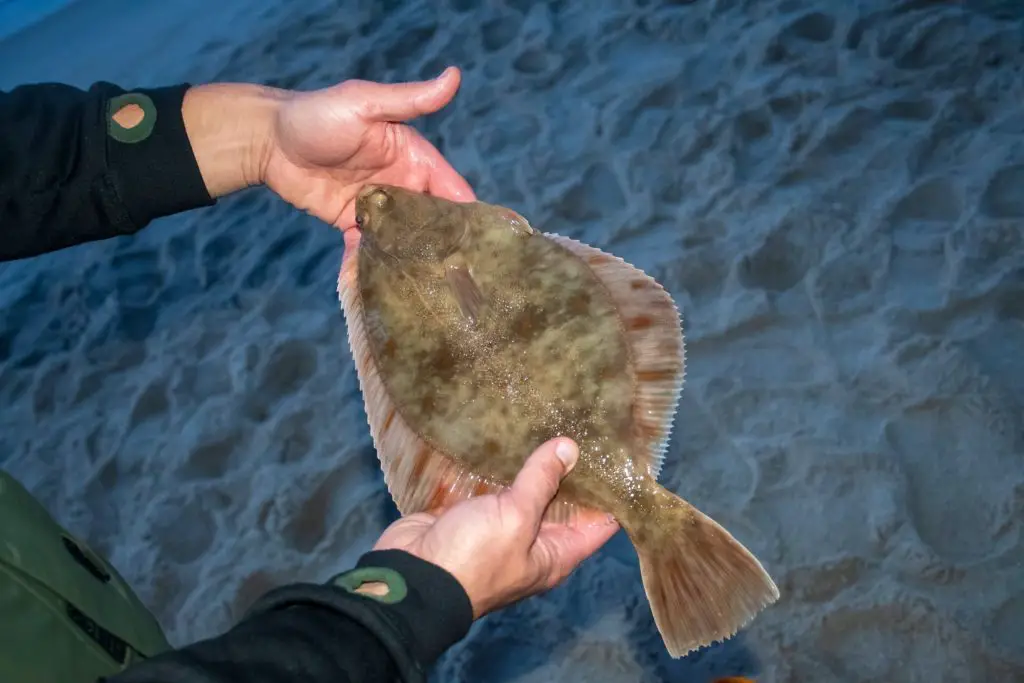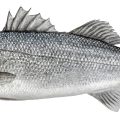Groupers and flounders may be large and have similar tastes, but they are different in appearance, habitat, dietary preferences, and other characteristics.
The grouper is a ray-finned fish belonging to the Serranidae family, Epinephelinae subfamily, and Perciformes order. The seabass is another member of the Serranidae family. Typically, the term “grouper” is used to refer to fish from the two big genera, Epinephelus and Mycteroperca.
Flounders are a type of flatfish species that are ray-finned demersal fish from the order Pleuronectiformes and suborder Pleuronectoidei, also called the Heterosomata. As the name suggests, they have a characteristically flattened body.

Grouper vs. Flounder: Interesting Facts
The grouper is a ray-finned fish belonging to the Serranidae family, Epinephelinae subfamily, and Perciformes order. The seabass is another member of the Serranidae family. Typically, the term “grouper” is used to refer to fish from the two big genera, Epinephelus and Mycteroperca.
An interesting fact about groupers is that most species go through sexual dimorphism. This means that they are born female and can later change their sex to male if the need arises once they mature. Most flounder species do not go through this biological process and cannot change their sex, which is a notable difference between the two fish.
An interesting fact about flatfish is that they undergo metamorphosis, which does not happen in groupers. As larvae, flounders have one eye on each side of their faces, but after the metamorphosis, one eye migrates to the other side of the body. So, as juveniles, flounders have two eyes on the same side, which is the side that faces upward when they lie flat.
Habitat differences between grouper and flounder
Flounder fish usually live in demersal habitats. Demersal means living close to the floor of the sea or water body. They are almost always found at the bottom of the water, lying flat on the ocean floor. However, differences can be seen in the locational preferences of flounders.
Some species of flounder prefer to stay near the shore. Some other species like to live along the continental shelf in deeper waters, which is the area of the seabed around a large mass where the sea is relatively shallow compared with the open ocean. They can be found in bays, estuaries, and even beaches.
Flounders are distributed in various places all over the world, but they can be primarily found in the Pacific and Atlantic oceans. Some species are distributed in other places as well. Commercially important flounders are present along the Atlantic coast of North America, Europe’s coasts, and the northern part of the Pacific Ocean.
On the other hand, groupers are mostly found in shallow tropical waters. They also prefer to stay near the bottom. They are most often found lingering near concrete structures at the bottom, like shipwrecks and ledges. They are also found on hard bottoms like rocks or reefs.
Grouper’s distribution is more specific compared to flounders. They can be found all along the Brazilian coast, the Bahamas, the Caribbean, the Florida Keys, and the Gulf of Mexico.
Diet difference between grouper and flounder
Groupers and flounders are both bottom feeders, and they are also both carnivores. So, their diets are similar, but some differences can be noted.
Flounders are carnivorous, and their diet consists of other animals. Depending on the species, age, as well as size, the preferred diet can vary. For example, larval and post-larval or juvenile flounders don’t stay near the bottom all the time; rather, they float freely on the water and look for tiny fish to prey on. But their diet mostly consists of zooplankton, worms, small crustaceans, and fish larvae.
Adults are opportunistic predators. They use their camouflaging abilities to catch their prey off-guard before attacking them. Since they are large in size, they can prey on various smaller aquatic animals like fish, crabs, shrimp, and more. They usually eat whatever they can catch most conveniently, as they are not very active.
Grouper fish also eat other smaller fish and crustaceans, but another important part of their diet is octopuses, which flounders don’t like. Despite their large size, not all groupers are predators. While some species are opportunistic predators, others like to ambush their prey.
How to distinguish between grouper and flounder by appearance
Groupers and flounders can be easily distinguished based on their appearances. Though both are ray-finned fish and both can grow to massive sizes, that’s more or less where the similarities between them end. Groupers have full bodies like normal fish, but flounders are completely flat and thin. However, there are similarities in their body colors.
The various flounder species may look different from each other in many ways, but they all have elongated and flat bodies that help them mix up and camouflage themselves on the seashore. They have a large mouth. Their eyes, both placed on the same side of the body, bulge out on two short stalks that are located on one side of the head. Their caudal fin, or tail, is of medium size.
On the other hand, groupers have robust bodies, and their eyes are present on both sides of their round heads. They have a large mouth. The lower jaw bulges more outward than the upper jaw. Groupers tend to have different types of patterns and dots all over their bodies, which flounders don’t. Their dorsal fin is soft.
Do grouper and flounder taste the same?
Grouper and flounder taste very similar. Both are mild-tasting fish and have a sweet undertone to them. Both are delicate and have a flaky texture.
However, flounder is inarguably healthier to eat as it is a normal seawater fish. It is a highly nutritious fish. Groupers are also nutritious, but groupers can contain too much mercury in their bodies, and eating groupers too much can lead to ciguatera poisoning.
Again, flounders are fairly endangered fish, as they have become victims of overfishing in the past years. The stock population has been reduced a lot. Though some species of grouper are endangered, they’re still more easily found compared to flounders.











